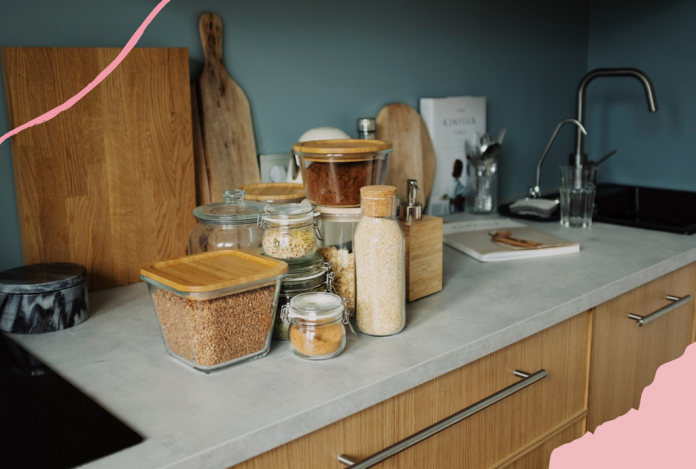You only have to set foot in a UK city centre (or watch those two rather incongruous Masterchef episodes of each series) to know that street food has transformed British dining culture. Markets once known for greasy burgers and limp hot dogs now buzz with globally-inspired dishes, cooked fresh and served with flair.
For aspiring food entrepreneurs, market stalls offer an enticing first step into the industry – lower risk than a restaurant, higher margins than delivery, and the chance to build a loyal following face-to-face.
But success in the street food scene demands more than just good cooking. The most prosperous traders understand their margins down to the penny, master prep-to-service flow, and choose dishes that balance profit with passion.
Here’s our deep dive into the street foods that offer serious returns while keeping the crowds coming back for more.
Korean Fried Chicken
Korean fried chicken is the current golden child of street food. Selling for at least £10 a portion and with costs of around £2, the margins are undeniable.
The secret lies in the double-fry technique – first at a gentle 150°C for thorough cooking, then a final blast at 180°C for that signature crunch. Those moreish sticky sauces are cheap to make in bulk. Most traders marinade their chicken overnight in buttermilk and gochugaru, then double-fry at different temperatures.
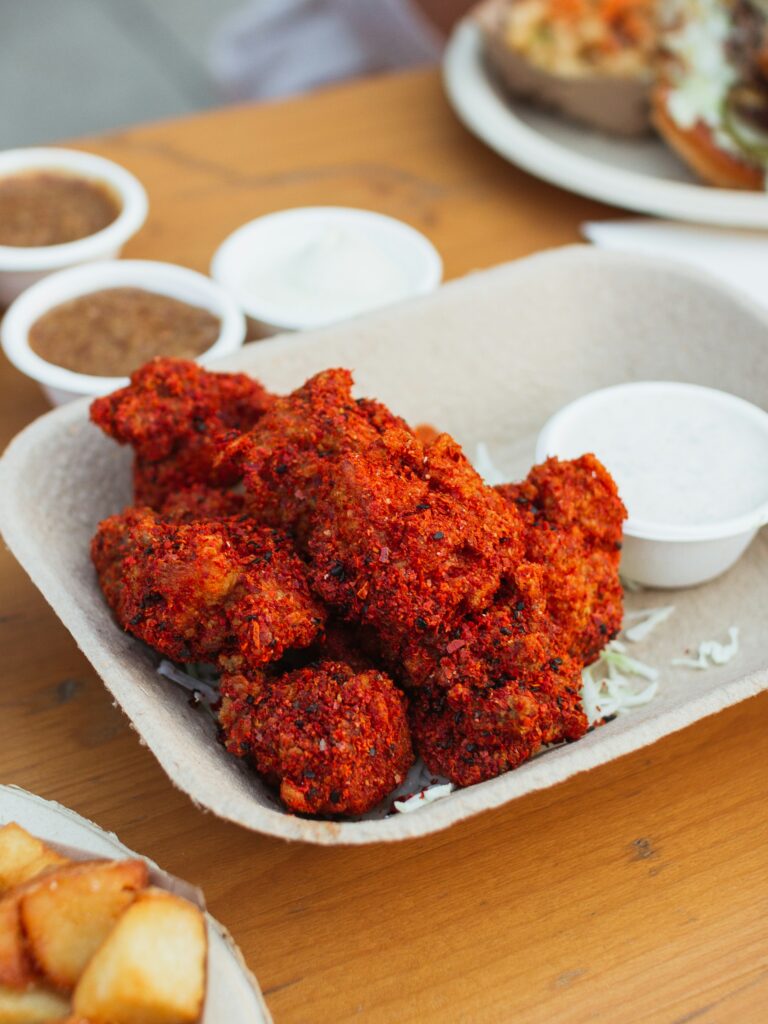

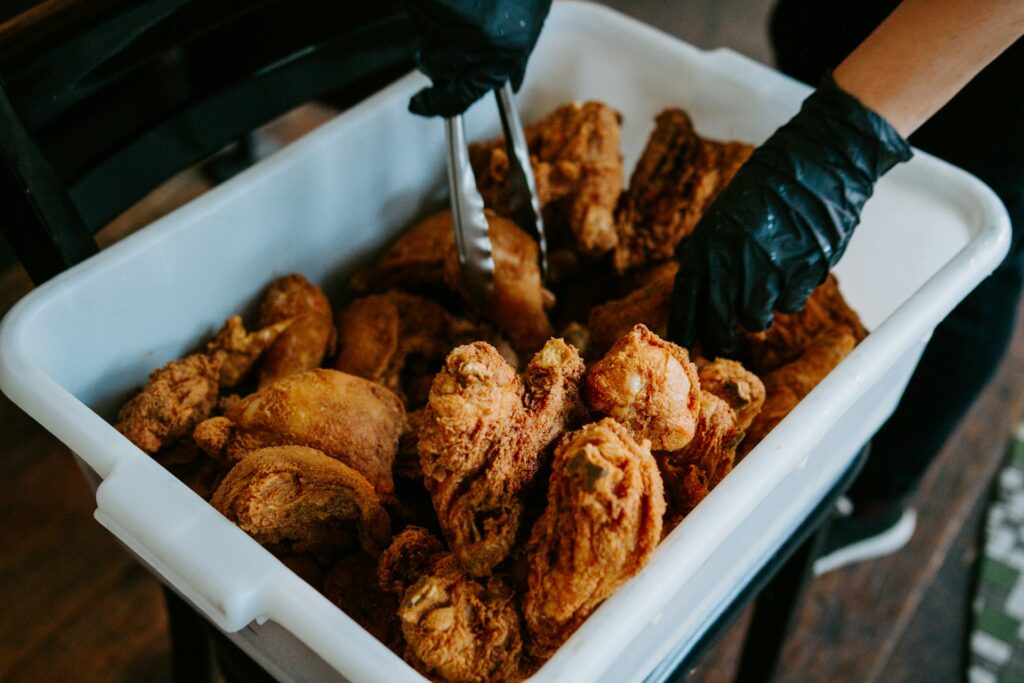
Equipment needs careful consideration: a good double-basket fryer (£1,800-2,200), a reliable warming cabinet for sauces (£400-600), and a commercial rice cooker (£300-400) for the essential side dish.
Many successful traders add a second fryer within months, doubling their capacity during peak times. The first fry can be done during prep, with the final fry during service ensuring that perfect crunch.
Read: Where to eat the best fried chicken in London
Fish Tacos
Fish tacos might sound fancy, but they’re a profit machine. One fresh fillet yields four tacos, each selling for £4. White fish like cod or haddock works perfectly, and the batter can be made unique with additions like Mexican beer or tempura-style lightness. The real genius is in the extras -house-made hot sauces cost pennies to produce but drive fierce customer loyalty.
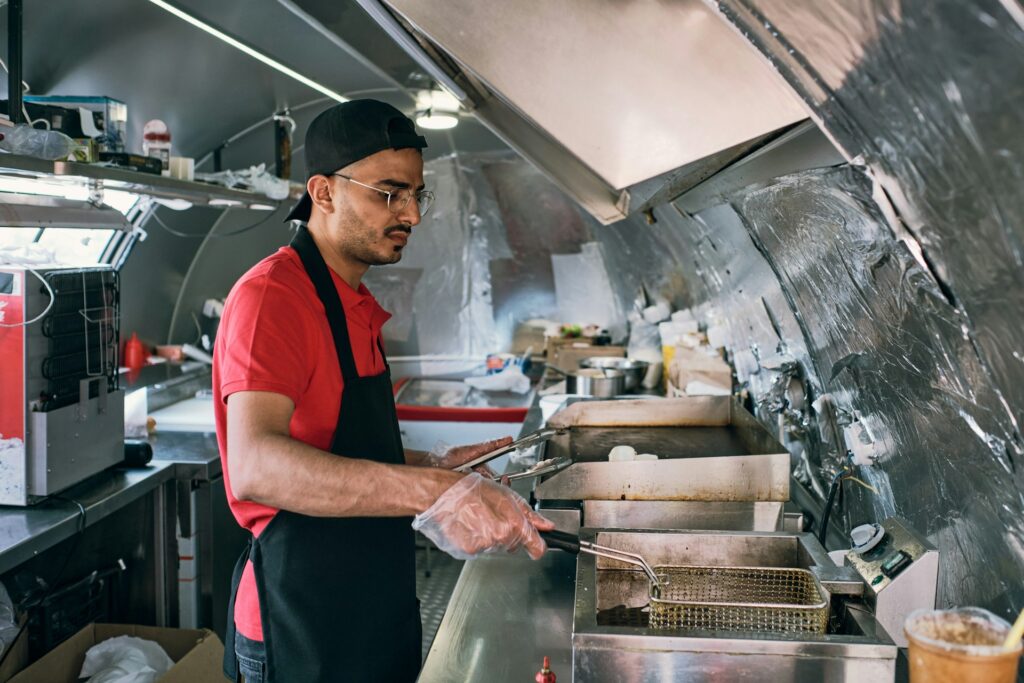
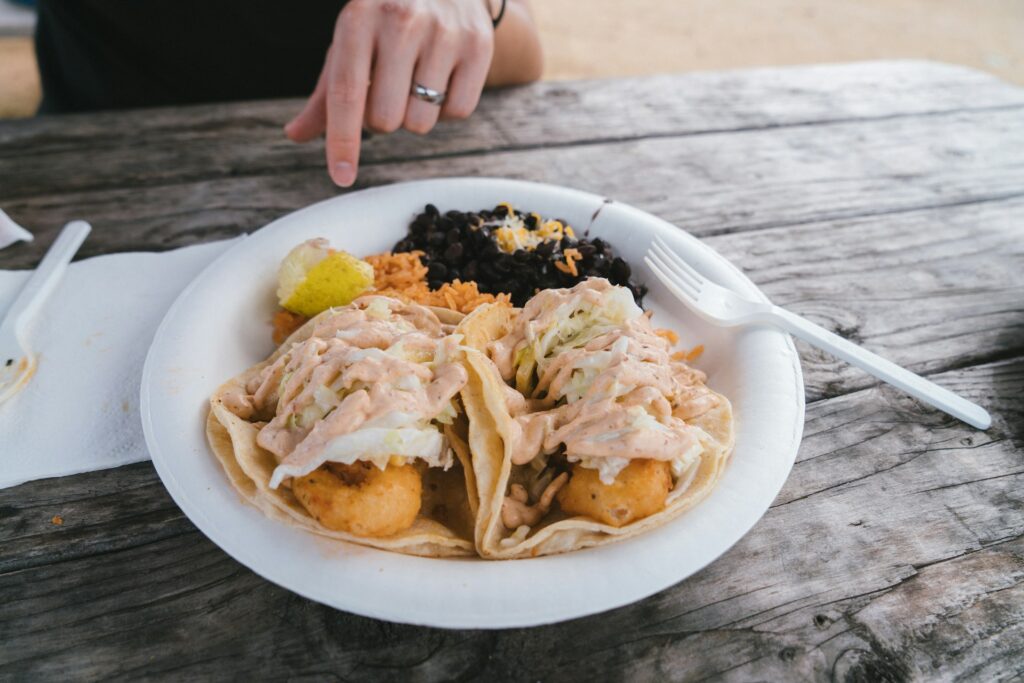
The essential setup includes a flat-top grill (£800-1,000) or commercial fryer (£1,500-1,800), plus good refrigeration for fresh elements. A prep station with wells for different toppings (£400-500) keeps service flowing smoothly. Look for equipment that’s easy to clean – those fresh salsas and slaws need frequent rotation.
Banh Mi
Bánh mì requires minimal cooking equipment but delivers maximum flavour and profits. These beloved Vietnamese baguettes are packed with pickled veg and marinaded meat, with production costs around £1.50 commanding £7-8 per sandwich at a minimum. Most of the prep can be done before service -the pickled carrot and daikon that give each bánh mì its signature crunch cost almost nothing to make in bulk and keep for days.
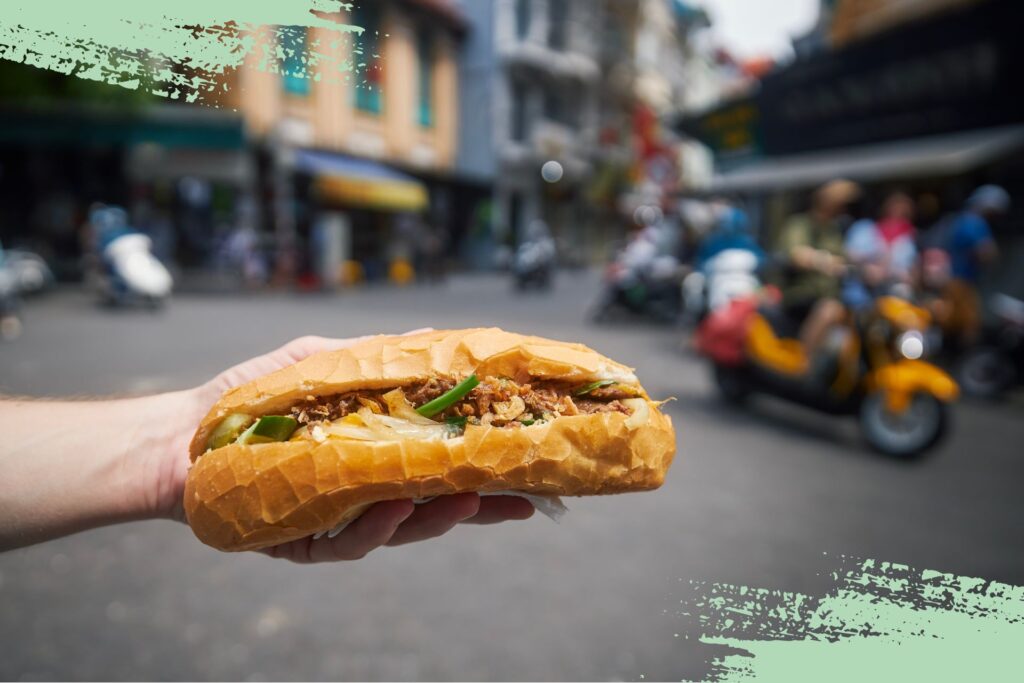
Equipment needs focus on storage and prep: a good commercial fridge (£600-800), vacuum sealer for marinades (£200-300), and proper prep surfaces. A small grill or flat-top (£500-700) handles the meat perfectly. Many successful traders use a warming cabinet (£300-400) to keep bread crisp during service.
One key point; it’s famously difficult to perfect the bread for banh mi. It’s wise, then, to outsource production to a dedicated Vietnamese bakery, if you’re lucky enough to have one near.
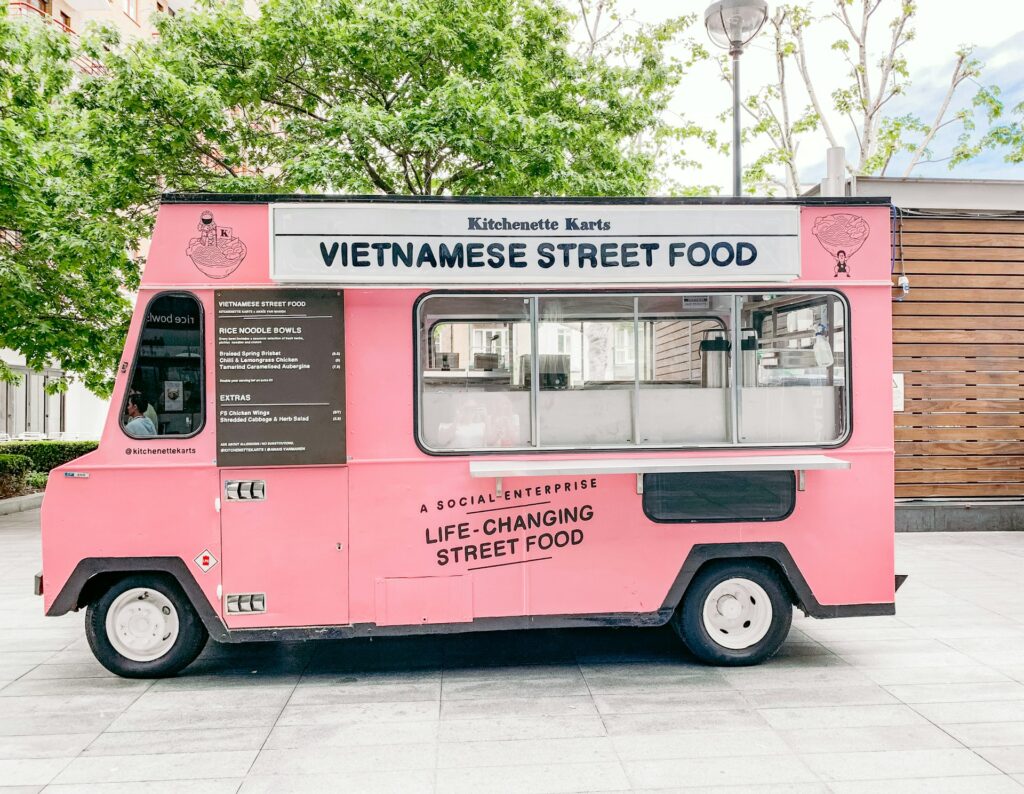
Read: Where to eat the best banh mi in London
Dumplings
Dumplings have become a market staple for good reason. Whether they’re Japanese gyoza or Chinese jiaozi, the production cost per unit is around 30p, while they sell for £1.50-2 each or £6-7 for a larger portion. The magic lies in batch preparation – a day’s work can yield hundreds of dumplings that freeze beautifully.
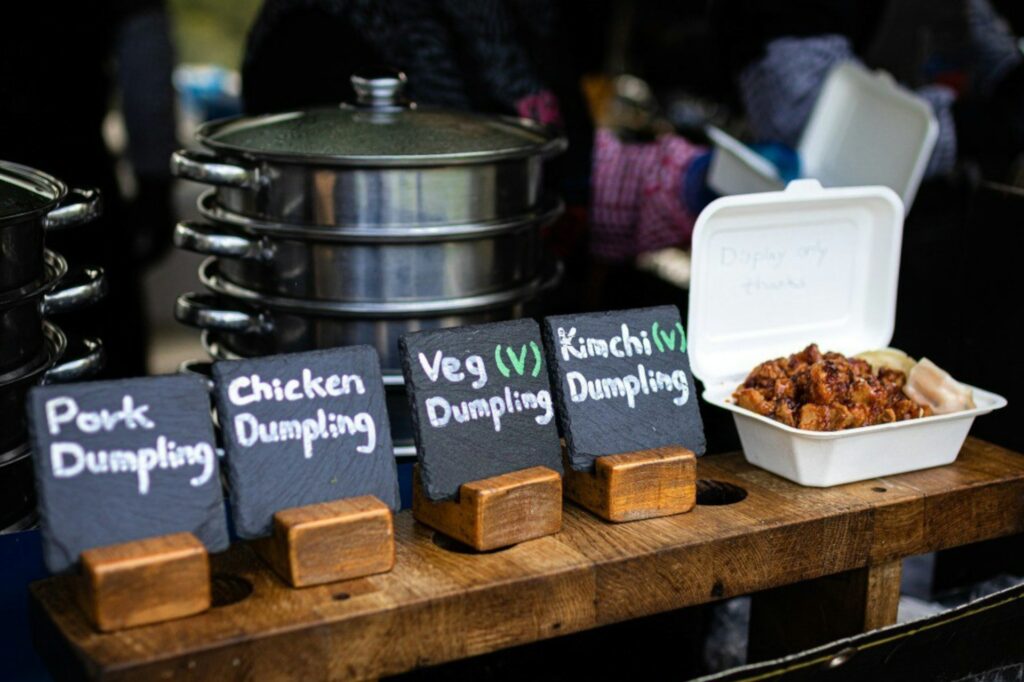
Essential equipment includes a high-quality flat-top grill (£800-1,000), steamer baskets, and a good freezer system. Many traders invest in a vacuum packer (£200-300) for storing prepped dumplings. The real profits come from the dipping sauces – soy, chilli oil, and vinegar bases that cost pennies per portion.
Arepas
Arepas, those irresistible Colombian/Venezuelan corn pockets, are another UK street food hidden gem. The dough costs pennies to make using pre-cooked cornmeal (masarepa), water, and salt. They can be stuffed with anything from cheap black beans to premium pulled pork, with production costs around £1.50 and selling prices of £6-8.
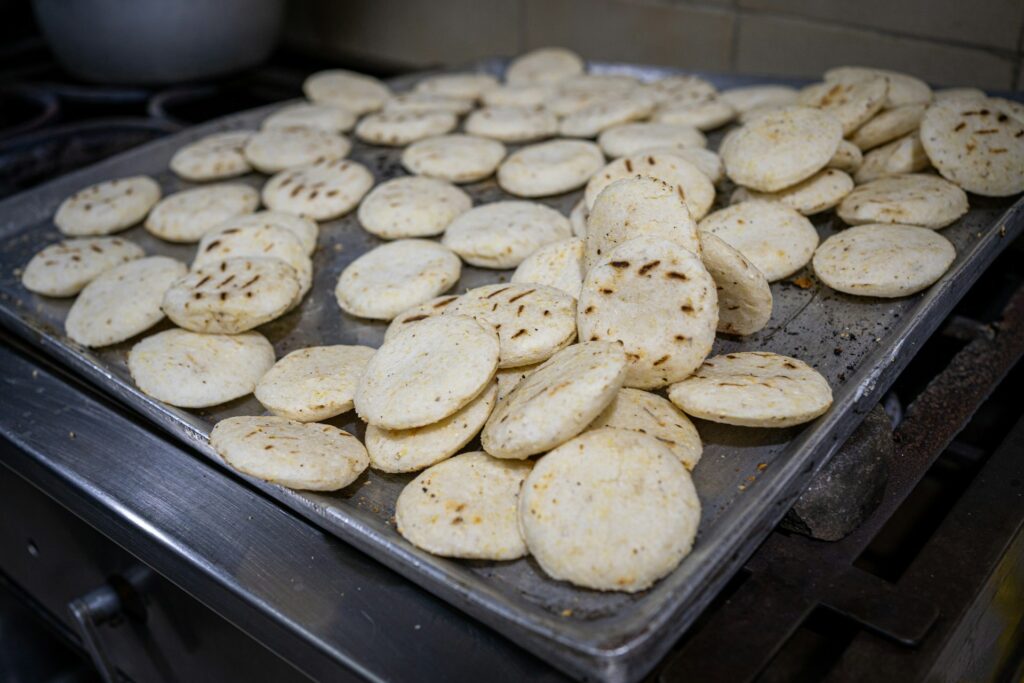
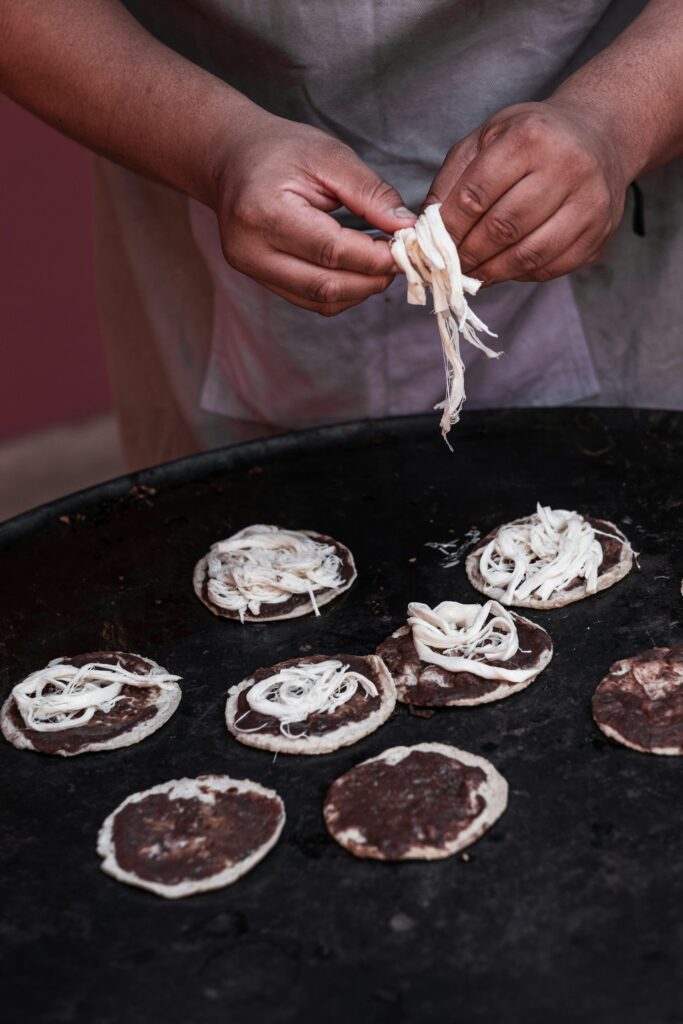
A commercial griddle (£600-800) is essential, along with a good prep station (£300-400) for fillings. Many traders add a sandwich press (£200-300) for perfect finishing. Hot-holding equipment for fillings becomes crucial during busy service.
Onigiri
Japanese rice balls, onigiri, offer remarkable margins. Even with premium fillings like salmon or umeboshi, each one costs under £1 to make and sells for £3-4. Equipment needs stay minimal: a professional rice cooker (£300-400), moulding equipment, and good storage solutions. Many traders add a small grill for yaki onigiri variations.
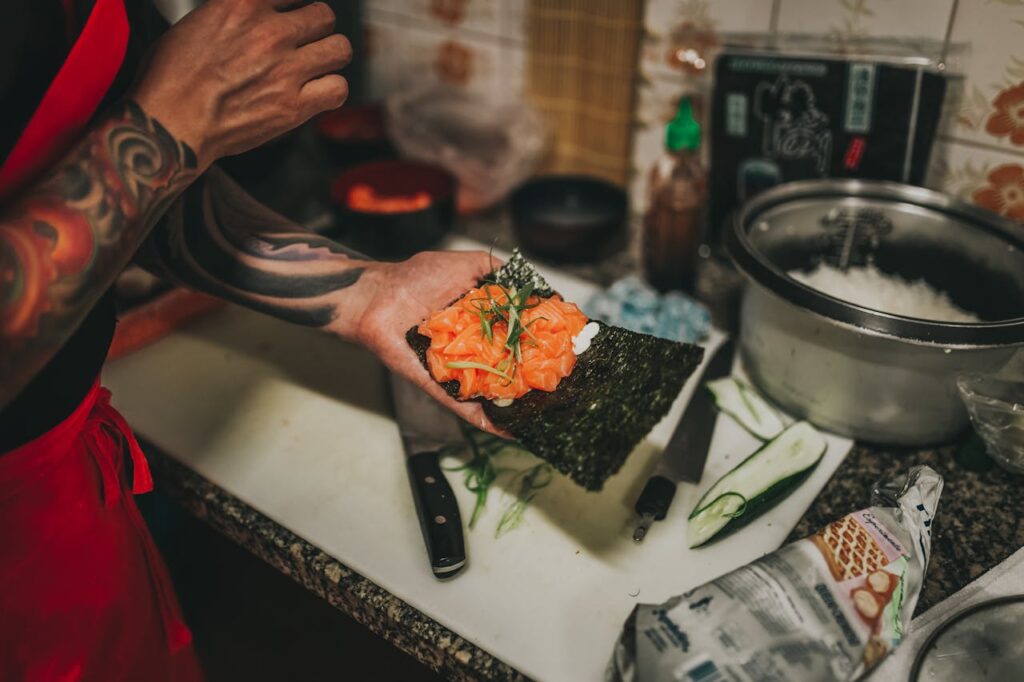

Biriyani
Proper biryani, while requiring more initial prep, commands premium prices of £8-10 per portion with costs around £2-2.50. The key is cooking in bulk and having an efficient reheating system during service. Rice and spices are cheap when bought in bulk, and even with good quality meat, the per-portion cost stays low.
Essential equipment includes specialist biryani pots (£200-300 each), quality rice cookers (£400-500), and efficient hot-holding systems (£600-800). Temperature control becomes crucial – invest in good thermometers and storage solutions.
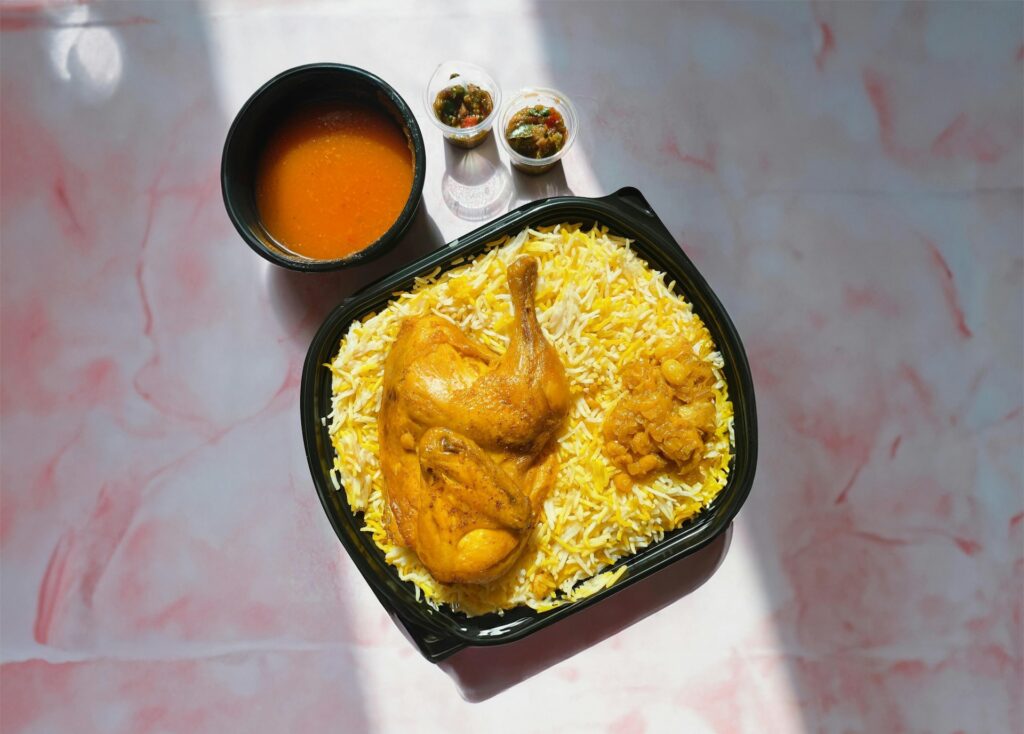
Essential Practicalities
The backbone of any successful budding food business lies in its infrastructure. Storage demands careful planning – you’ll need prep kitchen space (from £150/week) with adequate refrigeration, dry storage, and prep areas. On-site storage requires military precision: map out your stall layout considering prep space, service flow, and storage access.
Weather protection isn’t optional in British markets. Professional-grade gazebos start at £300, but consider investing in a heavy-duty model (£500-700) with removable sides (£150-200). Weights are essential – proper gazebo weights (£100) prevent disaster on windy days. Many successful traders add vinyl banners (£80-120) for brand visibility and extra weather protection.
Smooth payment processing is key to providing a great customer experience. A portable card reader provides a reliable solution for vendors. Mobile signal can be patchy in some locations, so it’s worth considering a mobile WiFi hub (£20-30/month) for reliable connectivity.

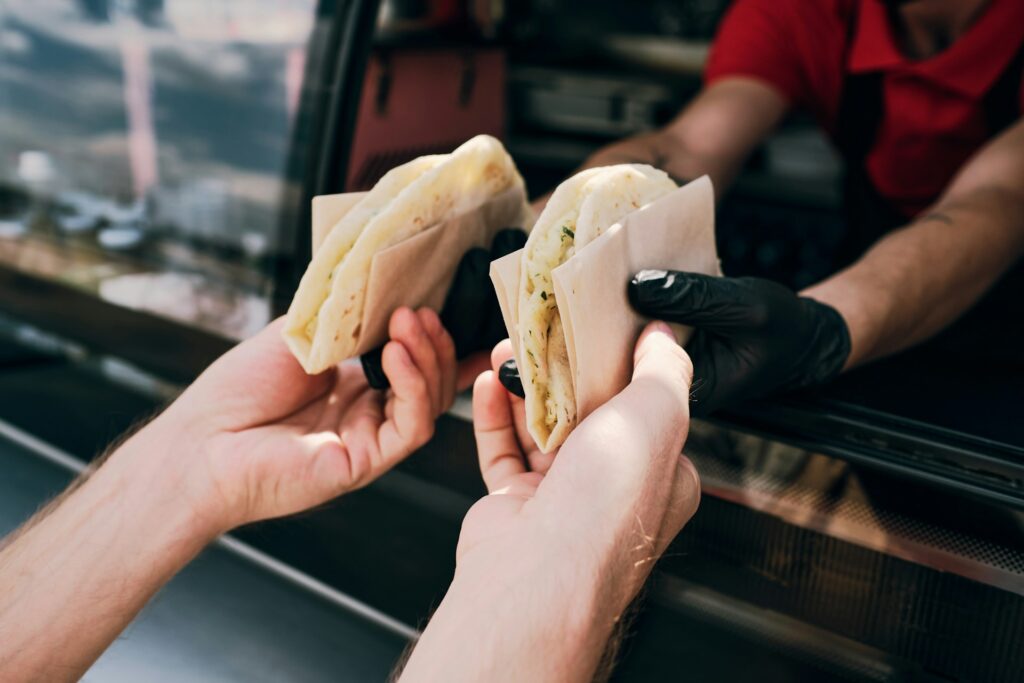
Power management can make or break your service. Markets vary in their electrical provision – some offer 16A or 32A supply (£10-20/day), others require generators. A reliable generator (£800-1,000) needs careful consideration: factor in fuel costs (£15-20/day), maintenance, and noise levels. Always have a backup power plan.
Transportation evolves with your business. Many start with daily van hire (£50-80), but dedicated vehicles become essential for growth. Refrigerated vans start at £15,000, though leasing (£300-400/month) offers a gentler entry point. Consider payload carefully – equipment, stock, and infrastructure add up quickly.
Documentation requires methodical organisation. Beyond the basics – food safety certificates (Level 2 minimum, £150), public liability insurance (£300-500 annually), and market trading licences – consider additional certifications that add value. Gas safety certificates (£100-150) for LPG equipment need annual renewal. Many successful traders add food safety management systems (£200-300) to streamline compliance.


The Bottom Line
The beauty of all these options is their scalability. Start with one dish done perfectly, then expand your menu as you find your feet. The most successful traders often begin with a single, perfectly executed dish rather than trying to do everything at once.
Remember, all these dishes need proper storage solutions both in your prep kitchen and on-site. Investment in good quality equipment will pay for itself – cheap solutions often lead to expensive problems down the line. Factor in adequate refrigeration, hot-holding equipment, and prep space when planning your setup.
Street food, at heart, rewards both passion and pragmatism. Invest in quality where it matters, find efficiencies where possible, and always keep learning from your market experience. The most successful traders balance creativity with careful planning, building sustainable businesses one perfectly served dish at a time.


